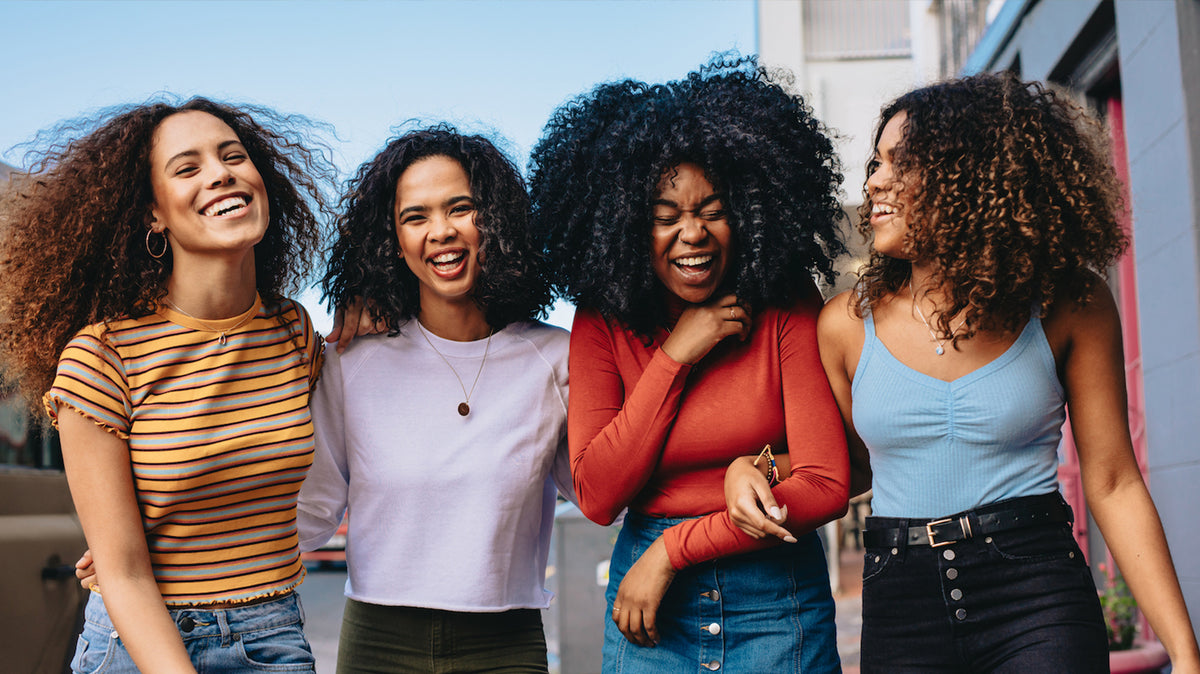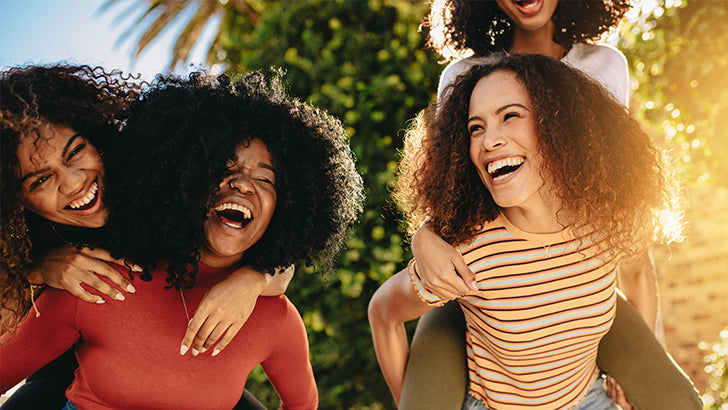
Type 3 hair is the most common curl type. The defined, corkscrew-shaped curls are everything people with this hair type strive to achieve, but getting the look is not as easy as it seems. This guides helps break down the characteristics of type 3 hair and the best tips to enhance this curl type to the max.
What is Type 3 Hair?
Type 3 hair, also known as curly hair, is one of the 4 main types of hair. Sitting somewhere between wavy and coily, type 3 hair can range from loose loopy curls to tight, springy corkscrews. Type 3 hair is one of the three curly hair types and can be further broken down into 3A, 3B, and 3C type hair. These subtypes depend on how tight the curls are. Type 3 hair tends to have some shine but can be prone to frizz.
Characteristics of Type 3 Hair
Type 3 hair has many characteristics which influence how it needs to be cared for. Here’s what you can expect from type 3 hair:
- Corkscrew Curls: type 3 hair curls range from looser, ‘O’ shape curls to more tightly wound corkscrew curls.
- Frizz: type 3 hair tends to be more prone to frizz than type 2 or type 4. The curls are not tight enough to easily maintain the shape, but they’re also not loose enough to easily keep moisture. Using styling products with good hold, especially gels that create a good gel cast, is essential to keep this curl type defined.
- Dryness: due to these tighter curls, natural hair oils don’t always reach the bottom of type 3 hair strands, and so these curls can become dry, especially in between washes.
- Multiple patterns: type 3 hair often has very different patterns across the head. It can even come to be wavy on the nape of the neck, depending on how often you wash your hair (the longer you wait, the looser the pattern will become).
What’s the Difference between Hair Types?
The most common chart for determining hair type is using the Andre Walker hair chart system. Created by Oprah Winfrey’s stylist, it’s a great way to identify your hair type and discover how to best look after your curls. Type 3 curly hair has more volume and texture at the root than wavy hair, but less so than coily hair. It can actually be easier to style than type 2 because the hair can hold its own texture for longer.
Different Classifications of Type 3 Hair
Type 3 hair can look and feel very different from person to person. The natural properties of each hair means it can be further divided into a classification of 3 different types. Each different kind of type 3 hair has different qualities and different aspects which need caring for.
3A Hair
3A is the largest and loosest of the type 3 curls. With a silky but bouncy texture, type 3A hair has shine and some frizz. Using medium hold products, like the Flexi Jelly or the Shine Jelly, can help reduce frizz and keep your curls looking defined for longer.
3B Hair
3B hair is more springy & spiralled than 3A. This hair type is particularly prone to frizz, so products that provide definition and moisture - like our Curl Defining Styling Soufflé - are important to enhance these curls.
3C Hair
3C hair is known for its tighter curls. This type of curl has a lot of texture and more volume, so it can benefit from flexible hold stylers like the Feather-light Protein Cream. Type 3C hair has very small spirals, meaning it’s also the driest of type 3 hair because oils struggle to reach down to the ends of the curls.
Expert Tips to Care for Type 3 Hair
Once you know your hair type, it may be difficult to know what to do with this information and how to decipher which product ranges are for you. There are some easy tips you can follow to enhance you type 3 curl pattern:
- Washing: To avoid drying out your curls, it’s recommended to only wash your hair 2-3 times a week with gentle shampoos or co-washes, ideally free from sulfates.
- Conditioning: Type 3 hair can be dry and fragile, so including a conditioning step in your hair routine is key to achieving the curls of your dreams. Thicker conditioners and hair treatments can lock in hydration that is lost if you have high porosity hair.
- Detangling: Using a wet brush, or wide tooth comb, while your hair is still wet and you have conditioner on can help to detangle without destroying your precious curls or causing any hair breakage.
- Moisturizing: Using leave-in conditioners before stylers can help to add more moisture and hydrate the hair.
- Styling: Style while the hair is still wet. Strong hold styling products are great to reduce frizz and keep those curls defined. Styling with the help of leave-in conditioners and gels can keep your type 3 hair springy and bouncy. Twirl small sections of curls around your finger to encourage definition.
- Drying: do not touch your curls while drying. This can cause frizz and disturb the curl pattern. Wait until the hair is 100% dry before scrunching and fluffing your mane.
How to Identify Your Hair Type
Our experts have created this 60-second quiz to help you decode your hair needs and discover your hair type. Curl pattern is only one of the characteristics of your hair, but there are more to learn like porosity, density and thickness. The quiz will help assess your needs and recommend suitable products to help rejuvenate your scalp, experiment with temporary hair color, healthy hair growth essentials and more.



